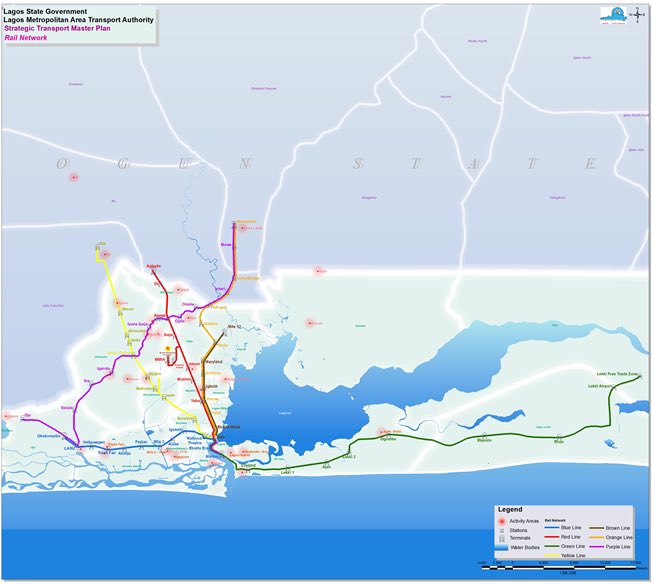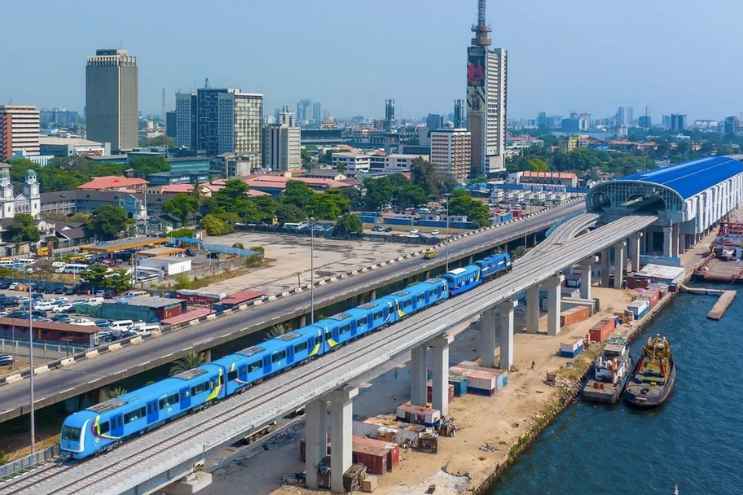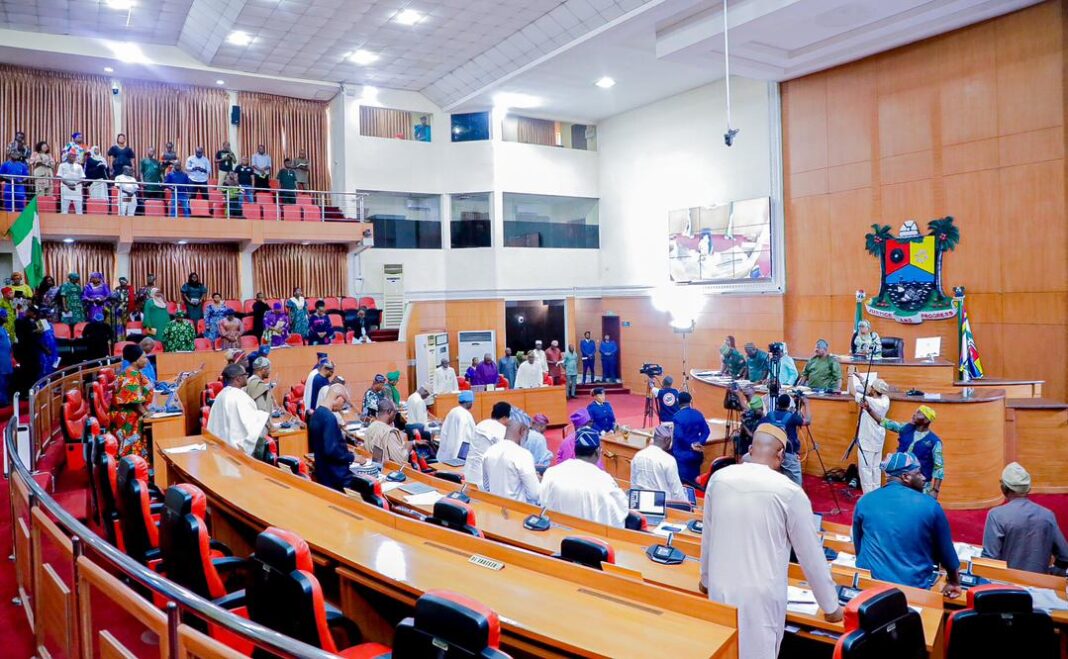Lagos is steadily advancing its vision of a modern and efficient rail network, with the Lagos Rail Master Plan outlining six rail lines, each identified by a unique color, to ease transportation in the bustling city.
The idea of a rapid transit system in Lagos isn’t new. It dates back to 1983, when then-Governor Lateef Jakande launched the Lagos Metroline project during the Second Republic. But in 1985, the military regime of Muhammadu Buhari abruptly canceled the project, leading to a $78 million loss for Lagos taxpayers.
Fast forward nearly 40 years later, and in a twist of fate, it was the same Muhammadu Buhari, now a civilian president, who commissioned the Blue Line rail project in 2023.
Now, with the Blue and Red Lines operational, Lagos is pushing forward with four more rail lines, Green, Purple, Yellow, and Orange, to complete its urban rail network.
The Lagos Rail Lines and Their Routes
Blue Line
The Blue Line, stretching 27 kilometers from Okokomaiko to Marina, was the first to launch. Its first phase, covering Mile 2 to Marina with stops at National Theatre, Iganmu, and Alaba, is already in operation, while the second phase, which extends from Mile 2 to Okokomaiko, is still under construction. The final expansion will push the line further to Agbara/Lusada in Ogun State.
Red Line
The 37-kilometer rail project, connects Ebute Metta (Oyingbo) to Agbado. It is the second operational rail system and features eight strategically located stations, including Agbado, Iju, Agege, Ikeja, Oshodi, Mushin, Yaba, and Oyingbo. It officially began commercial operations in October 2024.
Green Line
The Green Line, which Governor Babajide Sanwo-Olu recently confirmed will begin construction this year, is designed to run a 68-kilometer route from Marina to the Lekki Free Trade Zone. The project is expected to transport over 500,000 passengers daily at launch, with projections to exceed one million commuters by 2031. The federal government has allocated ₦146.14 billion as counterpart funding, which will be handled by the Ministry of Finance Incorporated (MOFI) on behalf of the Ministry of Transport.
Purple Line
This is a 60-kilometer railway that will extend from Redemption Camp through Mowe, Long Bridge, Isheri, Toll Gate, Omole, Ogba, Agege, Iyana Ipaja, Isheri Osun, Igando, LASU, Okokomaiko, and finally Ojo.
Yellow Line
The Yellow Line will cover a 34-kilometer stretch from Otta to the National Theatre, passing through Meran, Alimosho, Ipaja, Isheri Osun, Ejigbo, Mafoluku, Isolo, and Surulere. It is projected to transport 238,000 passengers daily at the start, with capacity expected to rise to 486,000 within a few years.
Orange Line
The Orange Line, spanning 48 kilometers, is designed to connect Ikeja with Agbowa in Ikorodu. Its route will pass through Alausa, Magodo, Mile 12, Irawo, Itowolo, Majidun Awori, Majidun Ogolonto, Agric Ikorodu, Alapadi, Maya, Eligana, Isiwu, Ibere, Imota, and Agbowa.

Challenges and the Road Ahead
If fully implemented, the Lagos Rail Master Plan has the potential to transform transportation in the city, easing congestion and significantly cutting down travel time.
However, funding constraints, bureaucratic delays, and governance inefficiencies pose serious challenges. Ensuring the project’s success will require transparency, government accountability, and strict adherence to deadlines.
For a state that has been chasing a world-class transit system for over four decades, the key question remains: will Lagos finally get it right this time?


